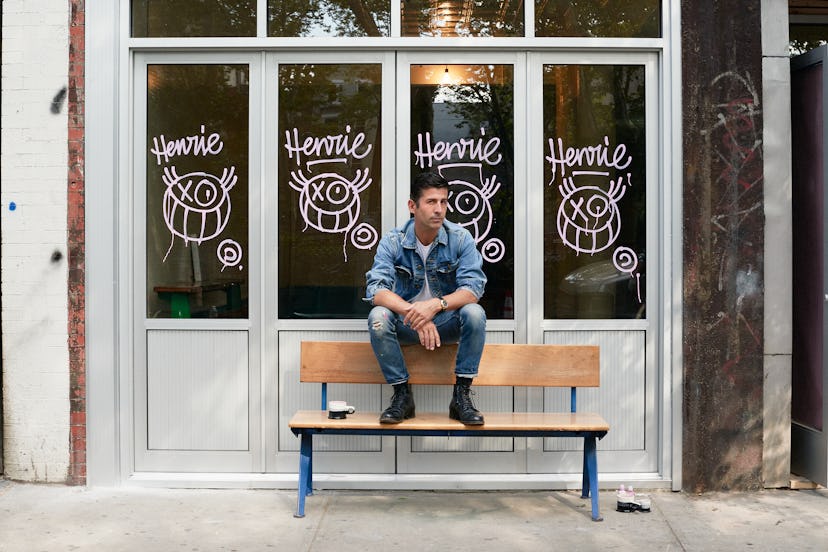Coffee Talk

Gordon Matta-Clark, an artist known for site-specific projects,loved to cook as much as he loved making art, and he didn’t always bother to make a distinction between the two. In 1971 he opened Food, a short-lived restaurant in New York’s SoHo, managed and staffed by artists, with an open kitchen that turned the creation of each meal into a performance. “It’s my favorite work of his,” says André Saraiva, who started his career as a graffiti artist but has similarly never limited himself to just one medium.
Born in Sweden and based in Paris and New York, Saraiva is a man of many endeavors and is known to approach each one as something of an experiment. At La Mercerie d’André, a retail venture he launched in Paris in the late ’90s, people could purchase his paintings by the meter from large rolls. Le Baron, the nightclub he opened in Paris in 2004, featured furniture by the artist Sophie Calle and DJ stylings by the electronic duo Daft Punk. The two guys behind Kolkoz, a French art collective, moonlighted as its doormen. “I always saw it as an art piece rather than a nightclub,” Saraiva says, sitting in his Chinatown studio. Just up the block, on Forsyth Street, he is in the midst of another creative venture: Cafe Henrie, a coffee shop–cum–cultural salon, where arty types can gather and exchange ideas. “There is no art movement without a place where people can come together and talk,” says Saraiva, who is also at work on a commission for a 20,000-square-foot ceramic mural in Lisbon, Portugal; an art show in Guadalajara, Mexico; the opening of a second Paris location of his Hôtel Amour; a book with Rizzoli; and a film based on the stories told to him by girls he’s met on Tinder. “Also, I needed a place to get my coffee in the morning.”
Housed in a former hotdog-cart garage, the cafe was designed to resemble—if only slightly—an austere administration office. Perforated boards line the walls, as do industrial-looking Jean Prouvé benches, which Saraiva has been collecting for some time. In true Saraiva fashion, he has enlisted a coterie of illustrious friends to contribute: The artist Tom Sachs designed a banquette; the photographer Petra Collins, a neon sign for the bathroom. The ceramic mugs and espresso cups were custom made by Peter Shire, an original member of the Memphis Group. Plans for art shows and nontraditional happenings, such as a reading by the writer Glenn O’Brien and a food performance by the artist Rirkrit Tiravanija, are under way. “I want people to come for an espresso,” Saraiva says, “and end up staying all day.”
Photography assistant: Chris Parente